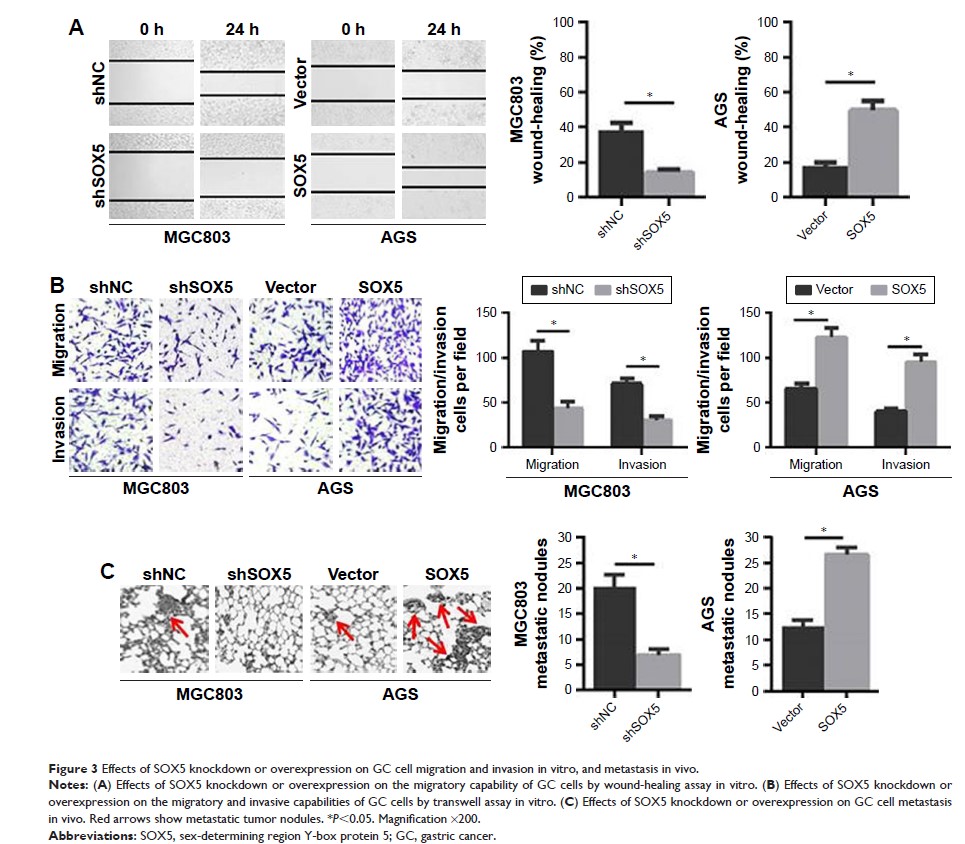9 7 8 1 6
论文已发表
注册即可获取德孚的最新动态
IF 收录期刊
- 3.3 Breast Cancer (Dove Med Press)
- 3.4 Clin Epidemiol
- 2.5 Cancer Manag Res
- 2.9 Infect Drug Resist
- 3.5 Clin Interv Aging
- 4.7 Drug Des Dev Ther
- 2.7 Int J Chronic Obstr
- 6.6 Int J Nanomed
- 2.5 Int J Women's Health
- 2.5 Neuropsych Dis Treat
- 2.7 OncoTargets Ther
- 2.0 Patient Prefer Adher
- 2.3 Ther Clin Risk Manag
- 2.5 J Pain Res
- 2.8 Diabet Metab Synd Ob
- 2.8 Psychol Res Behav Ma
- 3.0 Nat Sci Sleep
- 1.8 Pharmgenomics Pers Med
- 2.7 Risk Manag Healthc Policy
- 4.2 J Inflamm Res
- 2.1 Int J Gen Med
- 4.2 J Hepatocell Carcinoma
- 3.7 J Asthma Allergy
- 1.9 Clin Cosmet Investig Dermatol
- 2.7 J Multidiscip Healthc

SOX5 通过激活 Twist 介导的胃癌上皮 - 间质转化促进细胞侵袭和转移
Authors You J, Zhao Q, Fan X, Wang J
Received 5 December 2018
Accepted for publication 15 February 2019
Published 3 April 2019 Volume 2019:12 Pages 2465—2476
DOI https://doi.org/10.2147/OTT.S197087
Checked for plagiarism Yes
Review by Single-blind
Peer reviewers approved by Dr Amy Norman
Peer reviewer comments 2
Editor who approved publication: Dr Tohru Yamada
Background: Sex-determining
region Y-box protein 5 (SOX5) has been demonstrated to be implicated in
oncogenic function in various types of cancers. However, the role of SOX5 in
gastric cancer (GC) remains poorly elucidated. Herein, we investigated the role
and the underlying mechanism of SOX5 in GC progression.
Methods: SOX5 mRNA
and protein expression were detected by quantitative real-time PCR (qRT-PCR),
Western blot and immunohistochemistry in human GC specimens, and their clinical
significance was evaluated. The effects of SOX5 knockdown or overexpression on
GC cell behavior were determined by proliferation, wound-healing and transwell
assays in vitro, and metastasis assays in vivo; and epithelial–mesenchymal
transition (EMT)-related markers were detected by qRT-PCR, Western blot and
immunofluorescence staining.
Results: The up-regulated
expression of SOX5 in GC specimens was significantly correlated with clinical
metastasis and poor prognosis for patients with GC. Besides, SOX5 promoted GC
cell migration and invasion in vitro, as well as GC cell metastasis in vivo.
Mechanically, Twist-mediated EMT was likely involved in SOX5-facilitated GC
cell behavior.
Conclusion: SOX5 has
an important function in GC progression. In addition, SOX5 promotes GC cell
invasion and metastasis via activation of Twist-mediated EMT, thus providing a
potential therapeutic target for GC metastasis.
Keywords: SOX5,
gastric cancer, epithelial–mensenchymal transition
